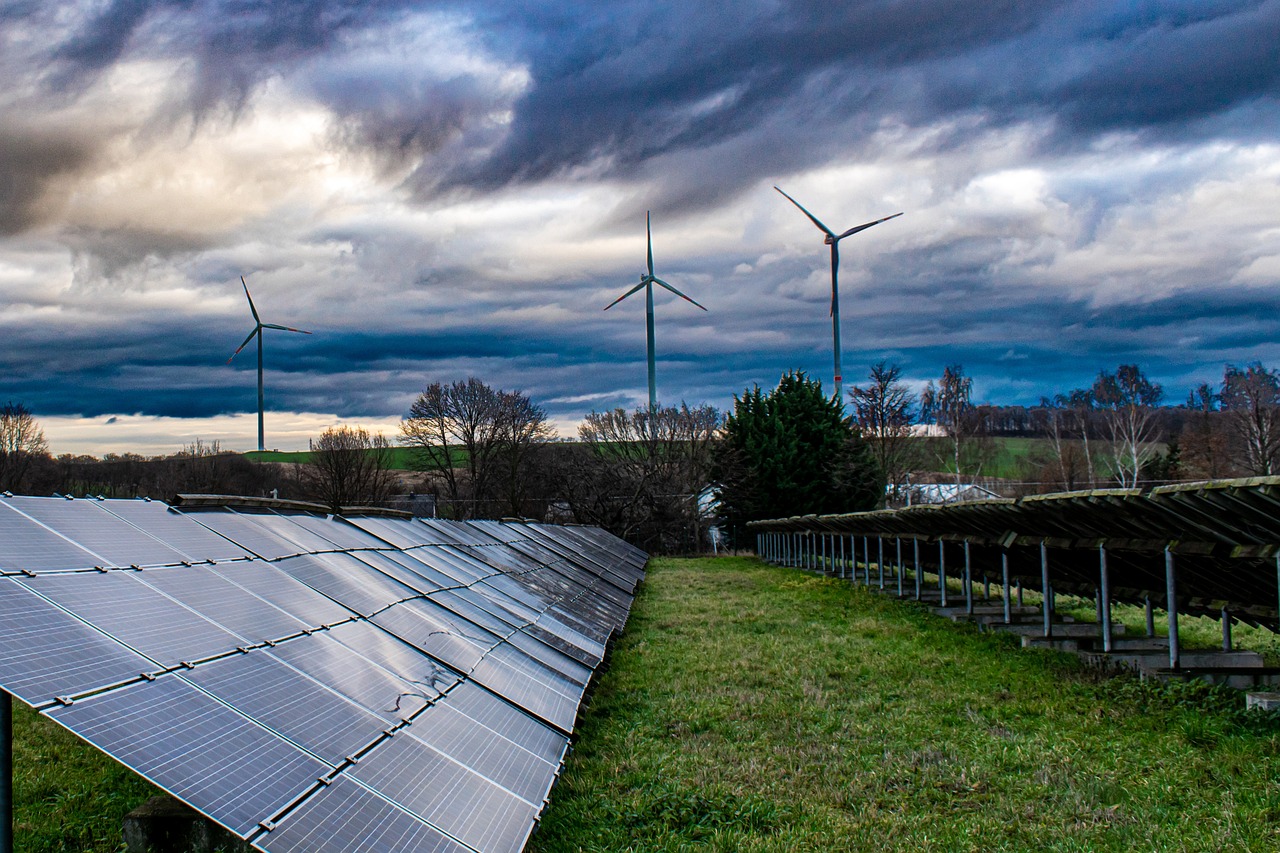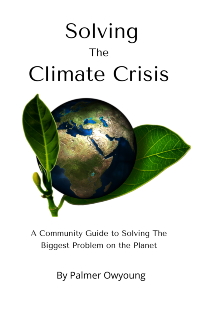6 Reasons to Be Hopeful About Climate Change Part 2
In part 1 we looked at how AI, the resilience of nature, new laws, and changes by businesses and consumers are all leading to greater hope for solving the climate crisis. In part 2 we will look at the growth in renewables and the next-generation technologies that are coming out.
5. Renewables Are Growing Exponentially
Renewable energy sources, such as solar, wind, and hydro are growing exponentially due to lower costs, increased awareness, consumer demand, and increased investment. As of 2020 solar and wind are cheaper than fossil fuels and the price will continue to decline as the cost of oil and gas increases.
The End of Fossil Fuels
Over the past decade, global renewable energy has grown at an average annual rate of 12.6% and renewables were the only category of energy that grew at double digits. The electricity generated from the wind and sun currently doubles every five years.
According to a report published in April 2023, by energy think tank Ember, the use of fossil fuels to produce electricity is expected to decline in 2023, which is the first time, outside of a global recession or pandemic. According to the lead author, Magorzata Wiatros-Motyka, this marks the beginning of the end of the fossil fuel age.
Today nearly 40% of global electricity is powered by a combination of renewables and nuclear energy and in 2022 solar was the fastest-growing source of electricity for the 18th year in a row, rising by 24% compared to the previous year. While wind energy rose by 17%.Although coal remains the single largest global source of electricity accounting for 36% in 2022, it won’t be for long. According to a December 2022 report from the International Energy Agency (IEA), the capacity for renewable energy is set to double by 2027, adding as much renewable power in the next five years as it did in the past two decades. The IEA also forecasts that renewables will account for over 90% of global electricity expansion over the next five years, which is 30% higher than the growth predicted in 2021.
Clean energy investment is expected to top $1.4 trillion in 2022 and now accounts for almost three-quarters of the growth in overall energy investment. This means, at the current rate, renewables will overtake coal as the largest source of electricity generation by early 2025.
Better Batteries
Of course, the common objection against renewables is the need for batteries. However even this technology is improving at a phenomenal rate and there are already better solutions than lithium-ion, which can be expensive, environmentally destructive, and can catch fire.
For example, silicon anode batteries have 20-40% higher energy density than lithium-ion and can store about 10 times the amount of energy. This means that EVs could go 50% farther and charge in 5 or 10 minutes.
There are also iron-air batteries that are 10 times cheaper than lithium-ion and can last 17 times longer and don’t have the nasty tendency to catch fire or explode. Form Energy is a Massachusetts-based energy company that believes in the technology so much that it is investing $760 million to build an iron-air battery factory in West Virginia, and is anticipated to start manufacturing its first products as early as 2024.
Then there are the non-chemical batteries such as sand and salt. Sand batteries work by heating low-grade sand to 500 C using wind, solar other renewable energy. The heat can then be used to warm homes during the winter months.
Salt batteries work similarly, but instead of using sand, a company named Malta is using molten salt which is heated up by electricity generated by renewables. When the grid needs energy, the heat is turned into hot air which is used to drive a turbine.
However we don’t need new technologies to act as batteries, as we already have water batteries, which are seldom talked about, are hundreds of years old, and already provide about 99% of the world’s electricity storage. A water battery (AKA pumped hydro) works by pumping water from a low pool to a higher one when electricity is cheap.
When power demand increases, the water at the higher pool is released and it passes through turbines that generate electricity to power the grid. The water is then stored in the lower pool once again, turning it into potential energy.
Switzerland recently completed a 20 GW battery capable of powering 900,000 homes. China is now building one that has a capacity of 270 GW of storage capacity which will be operational by 2025. In 2021, the U.S. had 43 operating pumped hydro plants that comprise 93% of energy storage.
Although pumped hydro can be controversial, especially when they involve damming rivers, which can destroy ecosystems, they do not require a river to work. It just requires two pools of water one at a higher level and another at a lower level. There are thousands of sites in the United States where hydro-batteries can be placed that would not do much damage to the environment and only a few hundred are needed to power the country’s entire power grid.
6. Next Generation Technologies
The Exponential Rate of Change
Technology changes at an exponential rate. Because we think linearly this is hard for us to imagine. Moore’s law was created by Gordon Moore, the founder of Intel and it says that every 18 to 24 months CPUs double in power. This has led to faster computers and smartphones and innovations in almost every industry, including healthcare, transportation, material science, synthetic biology, AI, and manufacturing.
The rate of change is continuing to increase and what used to take decades to become obsolete can now take less than ten years. This rate is already leading to innovations in how we create and store energy and it is helping us to develop innovative ways to remove carbon from the atmosphere and new ways to produce fuels and food.
Synthetic Biology
So nascent technologies today could be mature by the end of the decade due to Moore’s law. This could lead to the proliferation of cell-based meats which have been selling in Singapore since 2020 and as of March 2023 received FDA approval in the United States. By 2030 cell-based meats are projected to cost about the same or less than conventionally grown beef, alleviating the need to clear-cut forests to raise livestock and grow food to feed them.
According to a study from 2011 growing food this way uses up to 45% less energy, 99% less land, 82-96% less water, and emit 78- 96% fewer greenhouse gases.
Synthetic biology is already being used to grow microbes to create new sustainable fuels and in the future could be used for biomining, which is a way to rare extract minerals from the ground that are used in batteries and computers, in a more sustainable way, than strip mining.
Some companies are already using plants (phytomining) to do this, which means we don’t have to resort to blowing up mountains and drilling underground to extract them. This technology is already being used today in Malaysia, it just needs to be scaled.
Energy from Soil
A Barcelona-based company named Bioo is already getting renewable energy from the microorganisms in the soil, which is being used to power agricultural sensors and lights, but could eventually be scaled up to power a house or even an entire city.
Bioo produces energy day and night if the wind is blowing or not, when it is sunny, cloudy, rainy, or snowing, it produces a constant flow of electricity.
Although still in the testing stages, Bioo’s technology could eventually eliminate or reduce our dependence on chemical batteries. The company is currently working with agricultural giant Bayer, on a pilot project to use its sensor tech on farms and using bio-batteries to power lighting installations.
Carbon Removal and Storage.
Carbon removal captures carbon dioxide from the atmosphere and stores it permanently in geological formations, biomass, soils, or oceans². This could help offset some of the emissions that we are unable to eliminate.
Brilliant Planet uses algae to sequester CO2 and High Hopes uses balloons to extract frozen CO2 from high up in the atmosphere where it is concentrated. Both companies are already operational and estimate that once they scale their technologies, they can each remove 3 to 5 Gigatons of what we produce annually or about 10% of global CO2 emissions. They also project that they can get the price of carbon removal down to under $50 per metric ton.
Charm Industrial is a Bay Area-based company that turns agricultural waste and other biomass, that would end up being burned or decomposing, and turns it into a plant-based oil. That oil is then injected underground, where it is stored forever. The process also has other benefits, like helping to reduce the fuel for wildfires from fallen trees and branches.
Although it is still expensive today at $600 per ton, the company predicts that as it scales up it can bring the price down to a more manageable $50 per ton.
Next Generation Solar Technologies
Perovskite is a next-generation solar technology that has a lot of potential advantages over silicon. To begin with, it has a higher efficiency, in the lab it’s been able to achieve up to 40% while the best silicon panels only get to 20-22%. Perovskite is also easier and less expensive to manufacture. Since it can be made from a variety of materials the crystals can be made from more abundant, less toxic materials than silicon, making them easier and less costly to recycle.
Since they are less costly to manufacture they can be made locally which means less dependency on China, no disruptions in the supply chain, and fewer chances of human rights abuse.
Finally, perovskite solar cells can be designed so that they are flexible and lightweight, which makes them easier to install and they can be applied on a wider variety of surfaces such as clothing and backpacks.
Another innovation in solar comes from a company named Ubiquitous Energy, which produces a transparent solar coating made from light-absorbing dyes, that are non-toxic and come from abundant materials. This allows the company to turn any window into an energy-producing solar panel, while still maintaining its transparency.
Even more impressive is the fact that it can turn an entire skyscraper into a solar farm.
Even though the company was founded in 2011, it is still relatively small, but after receiving a $70 million infusion of cash in 2022, it expects to be producing at scale in 2024.
Next-Generation Wind Technologies
Conventional wind turbines are big, noisy, and ugly. They also require regular maintenance and the large blades can kill bats and birds. Aeromine Technologies, a Texas-based company has solved many of these issues with its blade-less wind turbine that uses race car technology to amplify a building’s airflow. This means that the device has a 10-foot by 10-foot (3 by 3 meters) footprint, is substantially smaller than a conventional turbine, is almost silent, requires little maintenance, and works even when there is very little wind available.
The Aeromine also takes up about 10% of the space of solar panels, while providing 50% more energy at about the same cost. It can also be integrated with a solar energy system, to provide a building with 100% renewable energy while reducing the need for batteries.
The biggest challenge the company says it is facing is keeping up with demand, with 6,000 customer requests in the three months after its public launch in November of 2022.
Offshore wind turbines have the same problems as conventional land-based ones with the added issue that they are in the ocean, which means maintenance is more difficult. Norway’s Wind Catching Systems thinks they’ve solved a lot of these problems with its colossal 1,000-foot Wind Catcher.
One unit contains 117 small wind turbines and could produce five times the energy as the strongest floating turbine in existence while halving the price of the energy generated, enough to power 80,000 homes. Since the blades are much smaller than a conventional off-shore turbine, they are much easier to work with and maintain.
The company estimates that one of their systems will have a life span of about 50 years and the first test system is being deployed in Norway in 2023, and depending on how the testing goes could be ready for regular deployment by 2024.
One of the biggest complaints about wind energy is that the turbine blades are not recyclable and end up in landfills. However, in February 2023 Vestas, a Danish wind turbine manufacturer, working with Aarhus University, Danish Technological Institute, and epoxy maker Olin, announced that a new process to break down the resins used in turbines and turn them into virgin materials that can be turned into new blades.
This means that all wind turbine blades can be recycled, even those that are already in landfills. This solves one of the biggest problems in the wind energy industry.
Wave Energy
An Australian company named Wave Swell Energy has an ocean platform named the Uniwave, that uses an artificial blowhole to create air pressure changes when the swell from a wave forces water through it, it drives a turbine and feeds energy back to shores
Since the platform floats it can be moved to any coastal location and connected to the energy grid.
Australia possesses one of the world’s largest potential for wave energy and it’s estimated that the coastal areas in the southern half of the country could generate as much as 1,800 terawatt hours. To put this into perspective Australia used 238 terawatt hours of electricity in 2021.
Although the company is still testing its technology it deployed its first unit at Grassy, King Island, Tasmania on January 10, 2021, and connected it to the grid in June of that year.
De-Acidifying the Ocean
Planetary Technologies is a Canadian-based carbon removal company that relies on the ocean for capture and storage. As the CO2 concentration in the atmosphere has risen, so has the concentration in the ocean, making it more acidic. This increased acidity affects ocean life like coral reefs and shellfish such as clams, mussels, and oysters by making it harder for these animals to form their protective shells, which can lead to disruptions in the food chain.
So, Planetary Technology is trying to decrease the acidity of the ocean by lowering the CO2 content, which would allow it to absorb more from the atmosphere, while also protecting shellfish and reefs. It does this by adding an antacid to the water, which neutralizes the acidic CO2 turning it into baking soda, that stays in the ocean for at least 100,000 years.
Although still in its trial stages, the company started open-ocean trials in 2022, by adding its antacid to wastewater treatment facilities.
Conclusion
Climate change is one of the world’s biggest problems, and although we are still not on the path that we need to be on, we are also not following business as usual and there are many reasons to be hopeful. By harnessing the potential of artificial intelligence, and combining it with legislation, changes in business and consumer behavior, renewable energy, the resilience of nature, and new technologies we can build a better more sustainable world.



